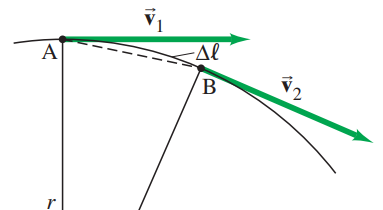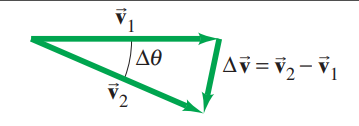A spinning object has a centripetal acceleration towards its axis that keeps it spinning. Even if the speed at any time is not changing, the direction is, meaning that there is a change in velocity over time, and therefore an acceleration.
We can obtain an equation for centripetal acceleration using the equation for linear acceleration in terms of polar coordinates (see Rotational Motion).
Assuming the radius is constant, we get
Since centripetal acceleration is only radial, we get
Why is this negative?
We can also find the same result using a different method. Acceleration is defined by:
However, our velocity doesn’t only change by magnitude, but also by direction.
Let’s assume we have an acceleration of constant magnitude. By taking a very small change in 
Our

As
Since we are only focusing on direction and not magnitude, we will have it be different from normal angular acceleration and call it centripetal acceleration
We can calculate the magnitude of centripetal acceleration. Take
Using centripetal acceleration, we can get a Centripetal Force.